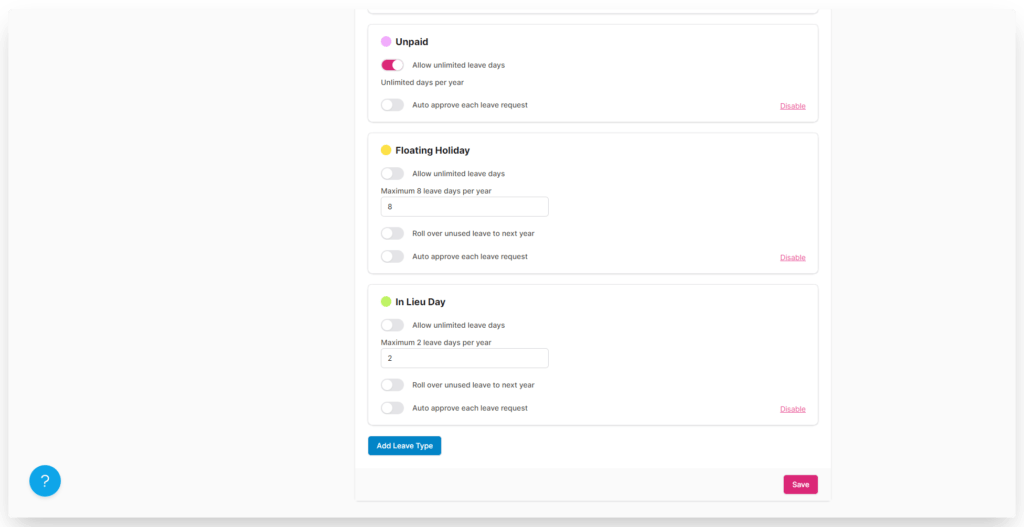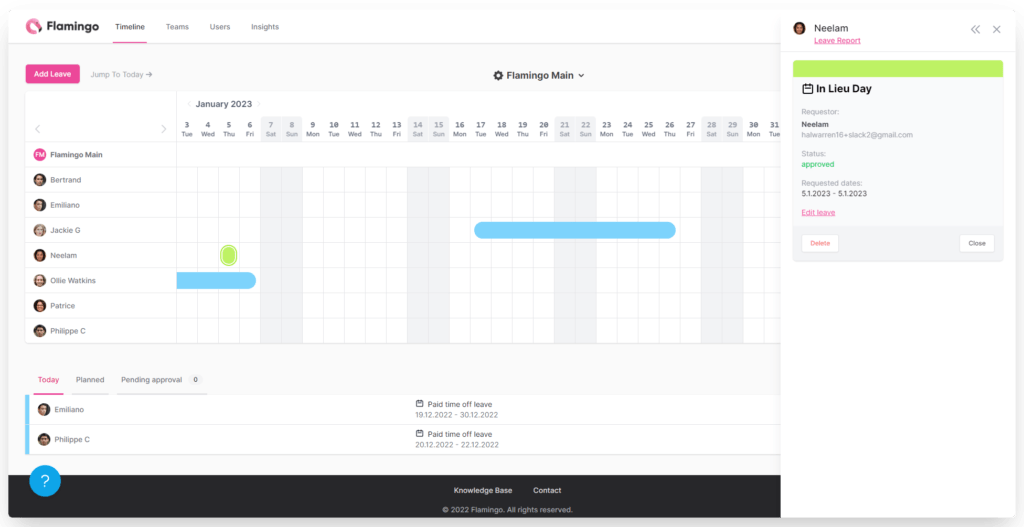November 18, 2024
Presenteeism: The $150 Billion Problem for Modern Businesses
What if your organization is losing more productive hours from employees showing up than from those staying h...
In this article, we’re going to share everything you need to know about time off in lieu (TOIL). We’ll share what it is, when employees might receive time off in lieu (sometimes referred to as time in lieu), how to calculate it and how to manage it in your business.
Whether it’s a legal requirement in your business’ location or not, it’s important to know how TOIL can boost employee morale and happiness. Keep reading for more.
Time off in lieu (aka TOIL, time in lieu), is when an employee gets additional paid time off in exchange for extra hours or duties performed at work.
The literal meaning of “In lieu” is “instead of”. It functions as a replacement for overtime pay, or for time an employee was supposed to be away from work.
Time off in lieu is a legal requirement in some places. In others, it’s an employee benefit or a gesture of appreciation for staff who go above and beyond their normal working hours.
Along with boosting happiness and satisfaction of employees, time off in lieu can help protect against overworking employees, which puts them at risk of burnout.
Time off in lieu is most commonly used when an employee works overtime. This could be working past their regular finish time, or coming in on their day off.
It often applies when employees work on a public holiday. They receive a “day off in lieu”, which is a paid holiday they can take at a later time in exchange for the day off they missed out on from the public holiday.
Time off in lieu also commonly functions as another form of paid overtime.
Instead of getting paid an extra rate for working overtime, the company gives an employee an extra day off. This could also be a half day, or a specific number of hours for hourly workers.
It will usually add up to the same financial value to the employee. But the benefit of offering time in lieu is that they still get the time away from work they need to refresh, recover, and avoid burning out.
Read More: The Five Stages of Burnout: how to recognize and avoid issues in your team.
A business can calculate time in lieu a number of different ways.
The simplest way is if a day in lieu is given in exchange for coming in on what otherwise would be a non-working day – such as a weekend or a public holiday.
In this case, the employee just gets an additional day off they can use at their discretion. This is basically the same as a floating holiday.
It could work a little differently if it’s given in place of paying overtime.
For hourly employees, you could give time in lieu as additional hours of annual leave, equal to the number of overtime hours worked.
Alternatively, for full-time or salaried employees, they may receive an additional day off or half day off for working a specific number of overtime hours.
However it works in your company, your employee leave policy should clearly describe this.
In many places – including most areas of the US – there is no legal requirement to provide additional pay for overtime, or time off in lieu of overtime or public holidays.
Some locations differ, however. For example, in New Zealand, if an employee works on a public holiday, they’re required to be paid time and a half, as well as given a day in lieu.
You’ll want to check with an employment law professional to get an accurate answer on what the law says for your company.
If time off in lieu is not a legal requirement in the area your business operates, consider offering this benefit anyway. It can be a powerful addition to your employee benefits package, along with supporting the physical and mental health of team members who work more than their contracted hours.
Time off in lieu can cause issues if not managed correctly.
These issues can include:
As such, it’s important to have a streamlined process for handling time off in lieu, including an easy to understand time off in lieu policy and an efficient leave tracking system.
As with anything in your business, it’s important to communicate how time off in lieu works to your employees and set expectations.
You should already have an employee leave policy, that describes how much paid time off (and unpaid, if applicable) each employee gets, as well as describing any processes or conditions related to paid time off or vacation days.
If you provide time off in lieu, you should also put all relevant details about this in your leave policy.
Your time off in lieu policy should say:
Essentially, your time off in lieu policy should answer any questions that employees might have in relation to time in lieu, so there is zero confusion on either side.
This should also be part of an employee’s contract, which they sign off on when starting the job.
You’ll also need a streamlined way to keep track of who has outstanding in lieu days, and to update the team schedule when an employee redeems their time off in lieu.
Very small teams may be able to get away with using a simple spreadsheet to track leave. But any with more than a few team members should use an automated leave management software tool.
If your team is on Slack, Flamingo is the best tool for the job. It makes it easy to submit leave requests, approve or deny requests, keep track of leave days, and pull up customized reports at any time.
All this works within Slack, for minimal deviation from your regular workflow.
With customizable leave types, it’s simple to add in lieu days to your leave policy. It’s also straightforward to add earned days off to an an employee’s profile.


Flamingo acts as the hub for your entire leave management system, and ensures you can track and manage time off in lieu without any headaches.
Flamingo streamlines leave management, letting you spend less time managing paid time off and more time growing your business
Employees who work overtime are usually your top performers. They’re the ones who go above and beyond, staying late or coming in on their day off to help the team.
It’s these people who you need to take care of the most. It’s important to show appreciation, and recognize their effort and hard work.
You also need to ensure that these team members don’t burn themselves out by working too hard. Burnout due to excessive working hours can often cost you your best people, by leading to health issues, declining performance, and increased turnover.
That’s why time off in lieu is a great tool. It’s a way to reward employees for additional hours worked. It also ensures that the employee gets time off at a later date to rest, refresh, and spend time on their personal life.
It also works as a simple “thank you”. A token of appreciation for the effort your staff put in.
You do need to take steps to manage time off in lieu, or else it can become a headache. But as long as you do this – and use a tool like Flamingo to make the process easy – time in lieu becomes a powerful device to build a happy and productive workplace.
Flamingo® makes managing your team’s paid time off a breeze.